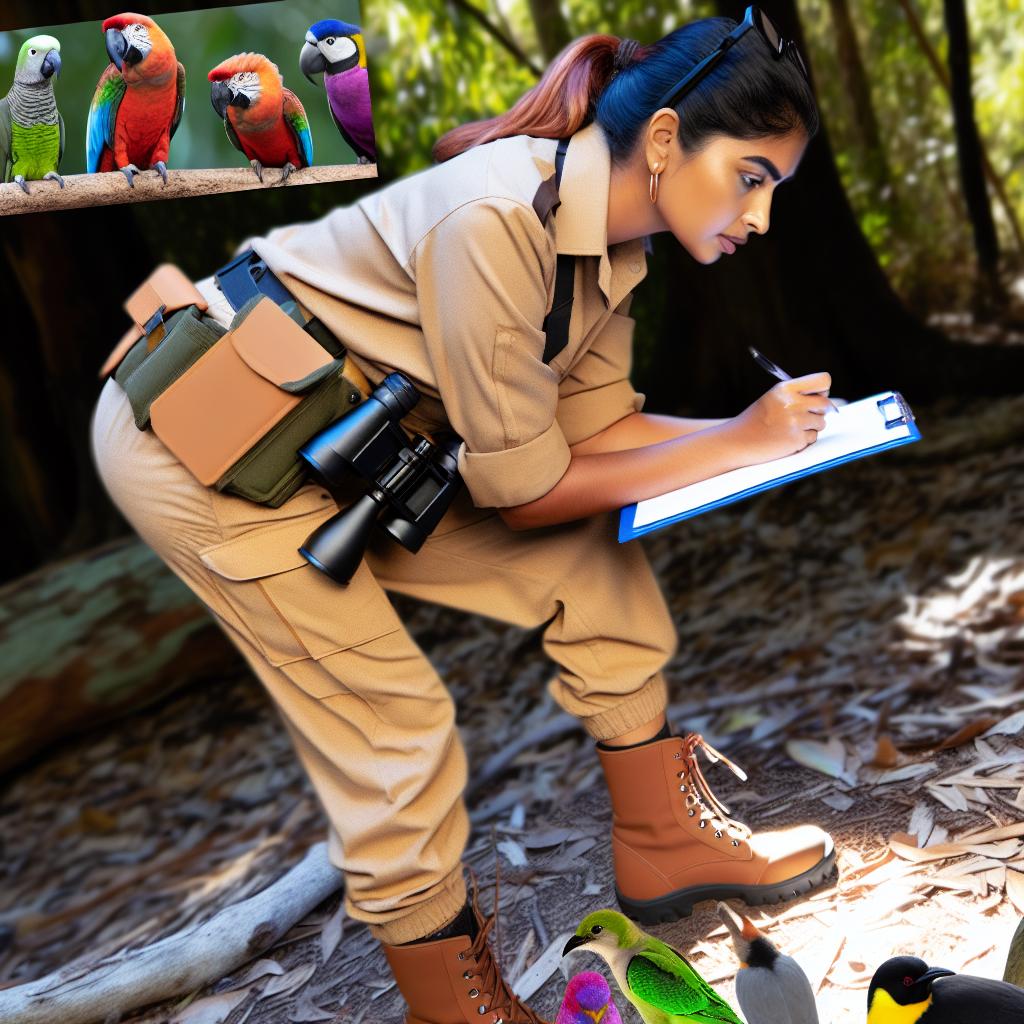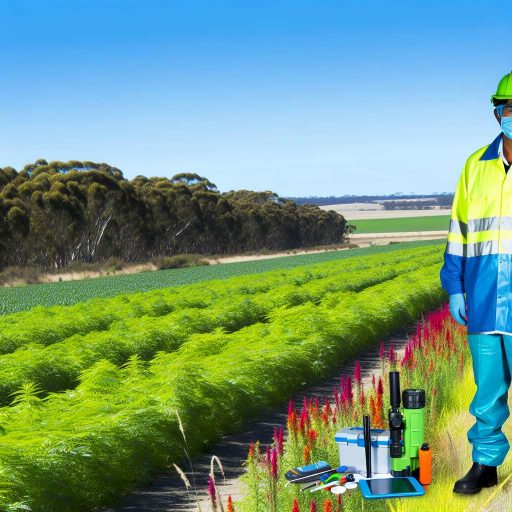Introduction to Zoology and its Importance in Wildlife Conservation
Zoology is the scientific study of animals and their behavior.
It plays a crucial role in understanding ecosystems and biodiversity.
This field focuses on the classification, physiology, and conservation of animal species.
Moreover, it helps address pressing environmental issues.
Conservation Methods in Zoology
Zoologists implement a variety of conservation methods.
These methods include research, habitat preservation, and species recovery programs.
For instance, they conduct field studies to gather crucial data on wildlife populations.
Additionally, they work on restoring habitats that have been degraded.
Applications of Zoological Research
Zoological research has numerous applications in conservation efforts.
This research informs policies aimed at protecting endangered species.
It also contributes to public education on wildlife conservation.
Furthermore, it supports the development of protected areas for vulnerable species.
Collaboration with Other Fields
Zoologists often collaborate with other disciplines for greater impact.
Partnerships with ecologists enhance understanding of ecosystems.
In addition, working with environmental scientists allows for better resource management.
Your Personalized Career Strategy
Unlock your potential with tailored career consulting. Get clear, actionable steps designed for your success. Start now!
Get StartedSuch collaborations can lead to innovative solutions for conservation challenges.
Engaging Communities in Conservation
Community engagement is vital in conservation efforts.
Zoologists educate local communities about the importance of wildlife preservation.
This education empowers individuals to participate in conservation initiatives.
Moreover, community involvement fosters stewardship toward local wildlife.
Overview of Australia's Unique Wildlife and Ecosystems
Diversity of Species
Australia boasts a remarkable variety of wildlife species.
This includes unique marsupials, reptiles, and birds.
Notably, kangaroos and koalas are iconic figures of its fauna.
In addition, Australia is home to many endemic species.
These species exist nowhere else on the planet.
Diverse Habitat Types Across Australia
Australia's ecosystems range from deserts to rainforests.
Each habitat supports distinct wildlife species.
For instance, the Great Barrier Reef hosts diverse marine life.
Conversely, the Australian bush features unique terrestrial environments.
Stand Out with a Resume That Gets Results
Your career is worth more than a generic template. Let us craft a resume and cover letter that showcase your unique strengths and help you secure that dream job.
Get HiredEach habitat faces specific environmental challenges.
Challenges Facing Endangered Species
Many Australian species face the threat of extinction.
Habitat loss is a significant driver of this decline.
Furthermore, invasive species exacerbate the situation.
Efforts to protect native species are critical.
Organizations work tirelessly to conserve these populations.
Role of Zoologists in Conservation Efforts
Zoologists play a pivotal role in wildlife conservation.
They conduct research to understand species behaviors.
Additionally, they assess habitat needs for various species.
Conservation programs focus on restoring habitats.
Moreover, education promotes awareness about wildlife protection.
Collaboration to Enhance Conservation Success
Collaboration is essential for effective conservation efforts.
Government agencies partner with non-profits and researchers.
Community involvement enhances these initiatives as well.
Transform Your LinkedIn for Maximum Impact
Elevate your professional brand with a LinkedIn profile that attracts recruiters, showcases your expertise, and maximizes opportunities. Stand out in your industry with a profile built for success.
Boost ProfileSuccessful conservation relies on collective action.
Each stakeholder contributes unique insights and resources.
Field Research Methods Used by Zoologists in Australia
Observation Techniques
Zoologists frequently use observation to study wildlife behavior.
This method provides insights into animals’ daily activities.
They often conduct observations in natural habitats.
Additionally, researchers employ tools like binoculars for distant observations.
Camera traps help capture candid moments of wildlife.
Tracking and Monitoring
Tracking animals is crucial for understanding their movements.
Zoologists often use GPS collars to monitor migration patterns.
They use various tracking methods, including scat analysis.
This helps determine the diet and health of populations.
Remote sensing technologies provide additional monitoring capabilities.
Sampling Techniques
Sampling allows zoologists to gather data from specific populations.
Common methods include transect surveys and quadrat sampling.
These techniques help estimate animal populations in different areas.
Moreover, genetic sampling can offer insights into biodiversity.
Field Experiments
Zoologists often conduct field experiments to test hypotheses.
They manipulate variables to observe effects on animal behavior.
This helps in understanding ecosystem interactions.
Such experiments are essential for conservation efforts.
Community Engagement
Collaboration with local communities enhances research efforts.
Zoologists often involve community members in data collection.
Citizen science initiatives can expand research capacity.
This approach fosters awareness and appreciation for wildlife.
Data Analysis and Reporting
After collecting data, zoologists analyze their findings thoroughly.
Statistical software aids in interpreting complex datasets.
Researchers then compile reports to share results with stakeholders.
This transparency promotes informed decision-making for conservation.
Find Out More: How Astronomers Explore the Universe from Australian Observatories
The Role of Modern Technology in Wildlife Monitoring and Protection
Advancements in Tracking Technology
Modern tracking devices help zoologists monitor wildlife locations.
These devices include GPS collars and satellite tags.
Additionally, they provide real-time data on animal movements.
This technology enhances our understanding of habitat use.
Innovative Camera Systems
Camera traps capture images of elusive wildlife species.
They operate silently and provide valuable behavioral insights.
Moreover, researchers can analyze animal populations more effectively.
These systems aid in studying breeding patterns and social interactions.
Remote Sensing Techniques
Remote sensing provides large-scale environmental data.
Satellite imagery tracks changes in land use and habitat quality.
This information helps identify threats to wildlife populations.
Subsequently, conservationists can implement timely protection measures.
Data Analytics in Conservation Efforts
Data analytics process vast amounts of wildlife data efficiently.
Machine learning algorithms predict animal behaviors and trends.
This predictive power informs targeted conservation strategies.
Consequently, conservationists can allocate resources more effectively.
Community Engagement through Technology
Mobile applications allow the public to report wildlife sightings.
Such engagement fosters community involvement in conservation efforts.
Moreover, citizen science initiatives enrich data collection.
These collaborations enhance overall wildlife protection strategies.
Emerging Technologies Shaping Zoological Research
As technology evolves, new tools will emerge for studying wildlife.
Advancements in drone technology promise efficient surveying methods.
Therefore, zoologists will gain deeper insights into ecosystems.
With continual innovation, protecting Australian wildlife will become more effective.
Learn More: Australia’s Space Race: Exciting Career Opportunities in Space Research and Exploration
Zoologists’ Contributions to Habitat Restoration and Management
Assessing Ecosystem Health
Zoologists play a vital role in assessing ecosystem health.
They conduct studies to monitor species populations.
This data helps identify endangered species and habitats.
Additionally, zoologists analyze the impacts of human activities.
For example, they study pollution effects on wildlife habitats.
Implementing Restoration Projects
Restoration projects require careful planning and execution.
Zoologists collaborate with local communities to implement these projects.
They focus on reintroducing native species to restore balance.
Moreover, they promote the removal of invasive species.
This approach encourages the natural recovery of ecosystems.
Developing Management Strategies
Effective wildlife management depends on strategic planning.
Zoologists develop management strategies based on research findings.
They propose policies that benefit both wildlife and local communities.
Regular assessments ensure these strategies remain effective.
Furthermore, zoologists engage in community education initiatives.
Monitoring Climate Change Effects
Zoologists closely monitor the impacts of climate change on wildlife.
They study shifts in species distribution and behavior.
Data collection contributes to better understanding and adaptation.
Additionally, they advocate for conservation policies addressing climate threats.
This proactive approach helps safeguard vulnerable species.
See Related Content: Australia’s Leading Scientific Innovations: New Career Paths in Research and Development
Collaboration with Indigenous Communities for Wildlife Conservation
Respecting Traditional Knowledge
Zoologists increasingly recognize the importance of traditional ecological knowledge.
This knowledge provides insights into local wildlife and habitats.
Moreover, Indigenous communities offer unique perspectives on conservation practices.
Consequently, zoologists work closely with these communities to enhance their studies.
Developing Joint Conservation Projects
Partnerships between zoologists and Indigenous communities lead to effective conservation initiatives.
For example, joint projects focus on protecting endangered species.
Additionally, these efforts help restore and preserve critical ecosystems.
Together, they create strategies that respect cultural values and biological diversity.
Creating Educational Programs
Education plays a vital role in wildlife conservation efforts.
Zoologists collaborate with Indigenous leaders to develop outreach programs.
These programs aim to raise awareness about local wildlife and habitats.
Furthermore, they teach sustainable practices that community members can adopt.
Building Long-term Relationships
Successful collaboration requires trust and respect among all parties.
Zoologists strive to build long-lasting relationships with Indigenous communities.
These relationships facilitate ongoing dialogue about conservation needs and goals.
In turn, they lead to more effective wildlife management strategies.
Recognizing Cultural Significance of Wildlife
Wildlife holds cultural significance for many Indigenous communities.
Zoologists recognize the importance of this connection.
As a result, they include cultural perspectives in their research and public communication.
Additionally, they honor Indigenous stories and traditions related to local wildlife.
Explore Further: How to Become a Marine Biologist in Australia: Essential Skills and Career Paths

Challenges Facing Australian Wildlife and the Role of Zoologists
Understanding the Threats
Australian wildlife faces numerous threats today.
Habitat destruction severely impacts native species.
Urban expansion reduces natural habitats for many animals.
Moreover, invasive species compete with local wildlife.
Climate change alters ecosystems and animal behaviors.
These challenges increase the risk of extinction.
The Importance of Zoologists
Zoologists play a critical role in wildlife conservation.
They study animal behavior and ecological relationships.
This research helps inform conservation strategies.
Additionally, zoologists monitor populations and health.
They identify species at risk and develop protection plans.
By collaborating with local communities, they enhance support.
Conservation Efforts and Strategies
Effective conservation requires a multifaceted approach.
Zoologists participate in habitat restoration initiatives.
They advocate for policy changes to protect wildlife.
Research findings guide sustainable practices in development.
Education programs create awareness among the public.
Community involvement strengthens conservation efforts.
Future Challenges and Solutions
Protecting Australian wildlife requires ongoing commitment.
Future challenges will likely include new threats.
Increased research funding can support innovative solutions.
Cooperation with global conservation networks enhances efforts.
Moreover, public engagement can drive positive change.
Addressing these challenges ensures a sustainable future for wildlife.
Case Studies: Successful Conservation Projects Led by Zoologists
The Eastern Curlew Recovery Program
The Eastern Curlew is a migratory shorebird in decline.
Zoologists spearheaded the Eastern Curlew Recovery Program in Australia.
They conduct extensive field surveys to monitor local populations.
Additionally, they hold community workshops to promote awareness.
As a result, local stakeholders engage in conservation efforts.
Moreover, research provides valuable data for habitat preservation.
This program has increased nesting sites along the coast.
Consequently, the Eastern Curlew population shows signs of recovery.
The Great Barrier Reef Conservation Initiative
The Great Barrier Reef faces numerous environmental threats.
Zoologists developed a unique initiative for reef conservation.
They utilize advanced technologies to assess coral health.
Furthermore, fisheries management techniques have improved biodiversity.
Community involvement has played a critical role in this initiative.
Workshops educate the public about reef ecosystems.
Regular monitoring has fostered a more sustainable fishing industry.
This collaborative approach promotes long-term ecosystem resilience.
The Australian Koala Project
The koala population faces threats from habitat loss and disease.
Zoologists launched the Australian Koala Project to address these challenges.
They use radio telemetry to track koala movements in the wild.
This technology reveals important patterns in their behavior.
Moreover, the project advocates for habitat restoration and protection.
Community members participate in planting native trees.
As a direct result, local habitats become more suitable for koalas.
Consequently, populations in restored areas have begun to flourish.
The Southern Hairy-nosed Wombat Recovery Efforts
The Southern Hairy-nosed Wombat is at risk of extinction.
Zoologists are actively involved in its recovery efforts.
They apply conservation genetics to understand population dynamics.
Additionally, community-driven educational programs increase awareness.
Engagement with local farmers assists in habitat management.
Subsequently, wombat populations have stabilized in several regions.
Furthermore, targeted pest control measures enhance their survival rates.
The collaborative efforts display effective conservation strategies in action.
Future Trends in Zoological Research and Wildlife Protection in Australia
Technological Innovations
New technologies reshape zoological research methods.
Drones enhance aerial surveys of wildlife populations.
Moreover, camera traps provide vital data on animal behavior.
These devices allow researchers to gather extensive information quickly.
Focus on Conservation Genetics
Conservation genetics plays a pivotal role in protecting species.
This field aids in understanding genetic diversity within populations.
Additionally, it helps identify inbreeding issues threatening survival.
As a result, targeted breeding programs can be designed.
Community Involvement
Increased community engagement is crucial for wildlife protection.
Local residents often possess invaluable insights into their environment.
Educational outreach programs raise awareness about biodiversity.
Consequently, communities are more likely to support conservation efforts.
Policy Development and Collaboration
Effective wildlife protection requires robust policy frameworks.
Collaboration among government agencies enhances resource allocation.
Partnerships with NGOs ensure a broader reach for conservation initiatives.
Policymakers must prioritize the interests of both wildlife and local economies.
Adaptive Management Strategies
Adaptive management facilitates flexibility in conservation practices.
This approach allows adjustments based on ongoing research findings.
Regular evaluations help identify the most effective methods.
Ultimately, it leads to improved outcomes for wildlife populations.




